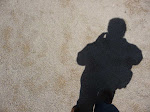Our deep, ancestral past continues to live on in humans of today,
despite the vast changes in our modern way of life. What universities now call science, art, and
humanities were originally embedded in human nature as a single world view,
instilled through ritual ceremonies in which everyone participated. Although
our contemporary approach to understanding the world is different, similar
biological capacities and needs underlie our investigations.
Autofocus Research Seminars on Architecture∩Philosophy∩Neurosciences are designed to provide a cross-disciplinary
forum for considering the universal cognitive and emotional foundations of our
individual and cultural lives in biological and social environments. Our first
international academic event - From
Darwin to Dissanayake - will consider the nature of the arts particularly as
they relate to the built environment and architectural theories. To this end,
our special guests are authors Ellen Dissanayake and Harry Francis Mallgrave
(whose chapter title in a recent book gave us the name for our seminar).
Ellen Dissanayake’s unique writings use an ethological, Darwinian
approach that considers art as something that people do ('make special' or 'artify') rather than as the standard focus on 'works of art'. Her cross-disciplinary
studies include paleoarchaeology, developmental psychology, neurosciences,
anthropology, and aesthetic philosophy, all of which are relevant to answering
questions such as 'What is art?' and 'Why does art exist in every human
society, past and present?' Harry Francis Mallgrave’s presentation will link
the history of architectural history to the architect’s brain, introducing an
embodied neural domain for design theory as embodiment and architecture.
The speakers will invite discussion on philosophical issues that
underpin relations usually subsumed as 'practice vs. theory' - that is a
recasting of design theory from 'the objects as subject' to 'the agent as
subject', as Mallgrave puts it.
![[af]journal](https://blogger.googleusercontent.com/img/b/R29vZ2xl/AVvXsEhXiW9QF2sQ4M6M7Qmb_yRtH_RLn7HJ3Er_V9j0PxlZQVm3_fG0HA5pLwdGR4mulyCkrouNGTZc-uoeZ2qnGtG18x7dDrU0mKZ_5XkClKGAFfpigX7z9hAdsPsYux7y9xb_nRNPo-gp70JN/s1600/AF3_30x30_sem.png)


